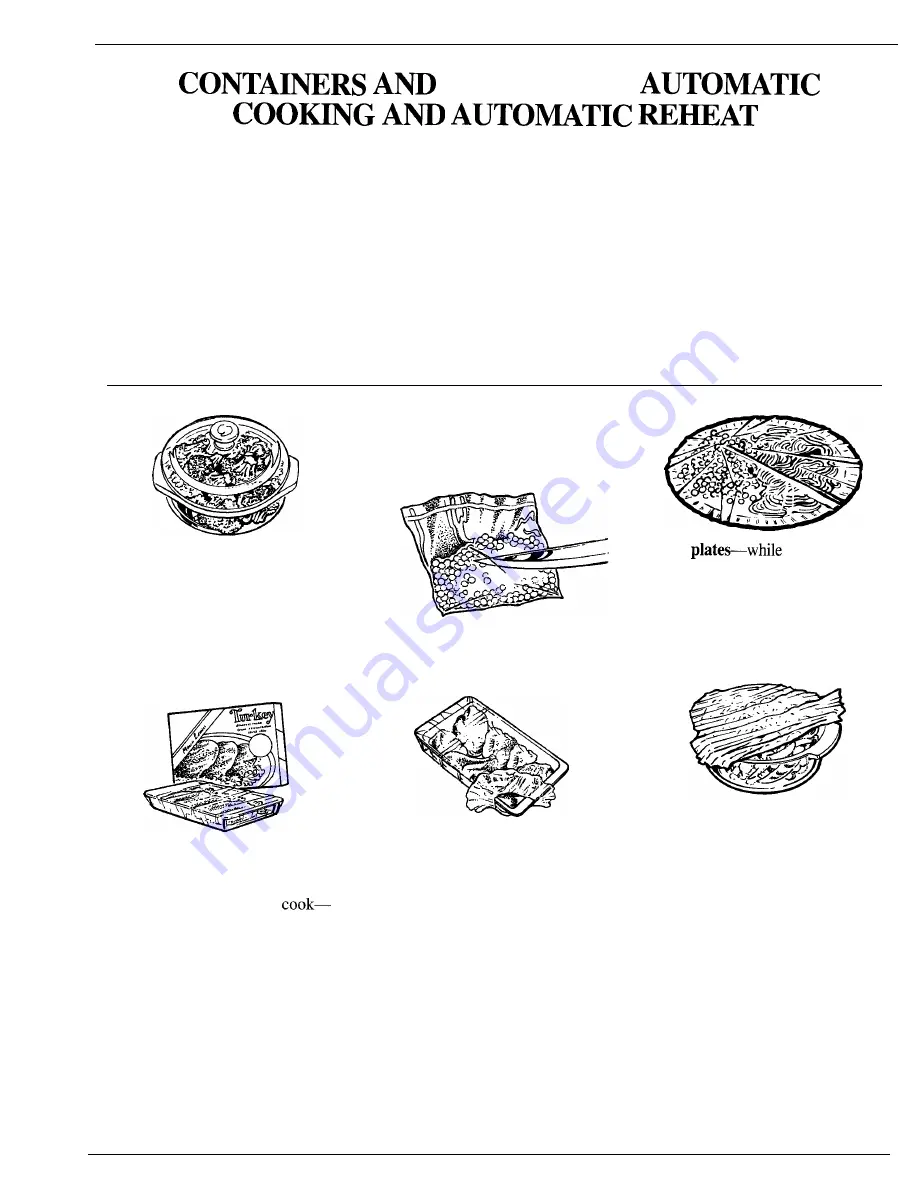
COVERS FOR
Containers and Covers
Appropriate containers and coverings help assure
good cooking results.
●
Always use microwave-safe containers and cover
them with lids or vented plastic wrap. Wonder if
it’s microwave-safe? Put it to the test described in
the Microwaving Tips section.
●
Never use tight-sealing plastic covers—they can
prevent steam from escaping and cause food to
overcook.
●
Match the amount of food to the size of the
container. Fill containers at least half full for
best results.
●
Be sure the outside of the cooking container and
the inside of the microwave oven are dry before
placing food in the oven. Beads of moisture turning
into steam can mislead the sensor.
●
Stir or rotate some foods after a beeping signal, if
required. See Automatic Cooking Control Guide.
Use microwave-safe casseroles or
bowls for entrees and vegetables.
Cover with lids that fit. If lids are
not available, use plastic wrap or
wax paper. Plastic wrap should be
vented over food to allow for
escaping steam. Seal by pressing
plastic wrap firmly around edges.
For frozen entrees in paperboard
trays, remove tray from box but do
not remove film over tray. Thick
entrees may take longer to
see the Automatic Cooking
Control Guide.
For frozen foods in metal trays,
remove foil covering and baked
goods, reinsert tray into box and
close ends of box.
Slit plastic pouches 1 inch as
shown above. Break food up
thoroughly after oven signals.
Use oblong or square containers
for chicken or corn on the cob.
Plastic wrap covering should be
vented over food to allow for
escaping steam. Seal by pressing
plastic wrap firmly around edges.
Paper
they maybe
used for Time and Temperature
Cooking and Defrosting, do not use
them with automatic cooking. Use
microwave-safe plates or bowls for
reheating. Cover with plastic wrap
or wax paper.
Follow Automatic Cooking Control
Guide setting for casseroles. Cover
casserole meat and vegetables
with sauce. Cool hot ingredients
or sauces. If they are not cool, it is
better to use Time Cook I & II.
26















































